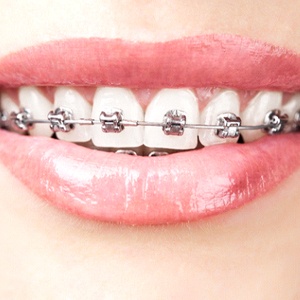Specialist Cumming Braces and Aligners: What to Know Before You Visit
Specialist Cumming Braces and Aligners: What to Know Before You Visit
Blog Article
Comprehensive Overview to Orthodontics Treatments for Dealing With Oral Imbalances
Understanding the ins and outs of each procedure, including their systems, advantages, and possible disadvantages, is crucial in making informed choices regarding one's orthodontic treatment. As we browse via the detailed overview to orthodontic procedures for dealing with oral misalignments, the detailed details of each approach will certainly unfold, dropping light on the course towards a harmonious and useful dental positioning.
Orthodontic Procedures Introduction

Regular modifications and surveillance are vital parts of orthodontic treatment to make sure progress is on track and to make any needed adjustments along the means. By going through orthodontic procedures, individuals can not just accomplish a straighter grin however likewise boost their overall oral wellness and feature.
Typical Dental Braces: Just How They Function
When thinking about orthodontic therapies for dental imbalances, typical braces stand out as a reliable method for dealing with teeth placing. Traditional braces include brackets, wires, and bands that function together to use continuous pressure on the teeth, slowly relocating them right into the preferred positioning. The brackets are connected to the teeth making use of a special adhesive, and the wires are threaded through the braces. By readjusting the stress of the wires, orthodontists can regulate the direction and pressure applied to each tooth, directing them into appropriate positioning over time.
One key element of exactly how traditional braces work is the process of bone renovation. As pressure is applied to the teeth through the dental braces, the bone surrounding the teeth is reshaped to support the brand-new tooth placements. This improvement is vital for the lasting stability of the corrected placement. Individuals will need routine adjustments at the orthodontist's workplace to make sure the braces remain to use the proper stress for effective teeth activity.
Invisible Aligners: Disadvantages and pros
These clear, custom-made trays are basically undetectable when put on, making them an enticing choice for individuals seeking an extra cosmetically pleasing orthodontic therapy. Clients can eliminate the aligners prior to eating or brushing their teeth, minimizing the risk of food getting stuck in the appliance and streamlining the cleaning procedure.

Surgical Orthodontic Options
Surgical interventions in orthodontics present practical alternatives for resolving complicated oral imbalances that might not be successfully solved with conventional orthodontic treatments. While undetectable aligners and typical braces can deal with lots of orthodontic issues, specific situations call for surgical treatment to attain optimum results. Surgical orthodontic choices are typically advised for extreme malocclusions, substantial jaw inconsistencies, and instances where the underlying bone structure needs alteration to accomplish proper alignment.
One common medical orthodontic procedure is orthognathic surgical procedure, which includes rearranging the jaws over here to deal with functional issues such as difficulty speaking or eating. This surgery is often carried out in partnership with an orthodontist that helps line up the teeth before and after the treatment. Surgical orthodontics might additionally entail procedures to subject affected teeth, eliminate excess gum cells, or reshape the jawbone to develop a much more harmonious face account.
Prior to thinking about medical orthodontic choices, people undergo a detailed analysis to figure out the need and potential advantages of such interventions. cumming invisalign. While surgical treatment may appear complicated, it can considerably boost both the function and appearances of the smile in situations where conventional orthodontic treatments fail
Retainers and Post-Treatment Treatment

Post-treatment care includes following the orthodontist's instructions faithfully. This may consist of proper oral health techniques, going to follow-up visits, and putting on the retainers as prescribed. Failure to abide by post-treatment care instructions can result in regression, where the teeth slowly relocate back in the direction of their original settings. Consistent retainer wear, good oral health, and routine oral examinations are necessary for keeping the outcomes attained via orthodontic surgery and guaranteeing the long-term stability of the corrected oral positioning.
Conclusion
In verdict, orthodontic treatments use different choices for remedying oral misalignments. Typical braces utilize metal brackets and wires to shift teeth into proper placement. Invisible aligners supply an even more very discreet alternative but might not be ideal for all instances. Surgical orthodontic alternatives are available for extra serious misalignments. Retainers are frequently used post-treatment to maintain the new placement. Overall, orthodontic procedures can successfully boost dental health and wellness and visual look.
As we browse through the thorough guide to orthodontic procedures for fixing oral imbalances, the complex details of each approach will unravel, losing light on the path towards a harmonious and practical dental alignment. - orthodontist
One of the most typical page orthodontic therapies is the usage of braces, which consist of steel braces and wires that apply mild pressure to slowly change teeth right into the desired setting.When taking into consideration orthodontic therapies for oral imbalances, standard braces stand out as a time-tested approach for remedying teeth positioning. Furthermore, undetectable aligners may not be ideal for intricate orthodontic concerns that need more substantial teeth movement, as they are commonly suggested for light to modest cases. Retainers are tailor-made orthodontic tools made to hold teeth in their fixed positions after the conclusion of orthodontic treatment.
Report this page